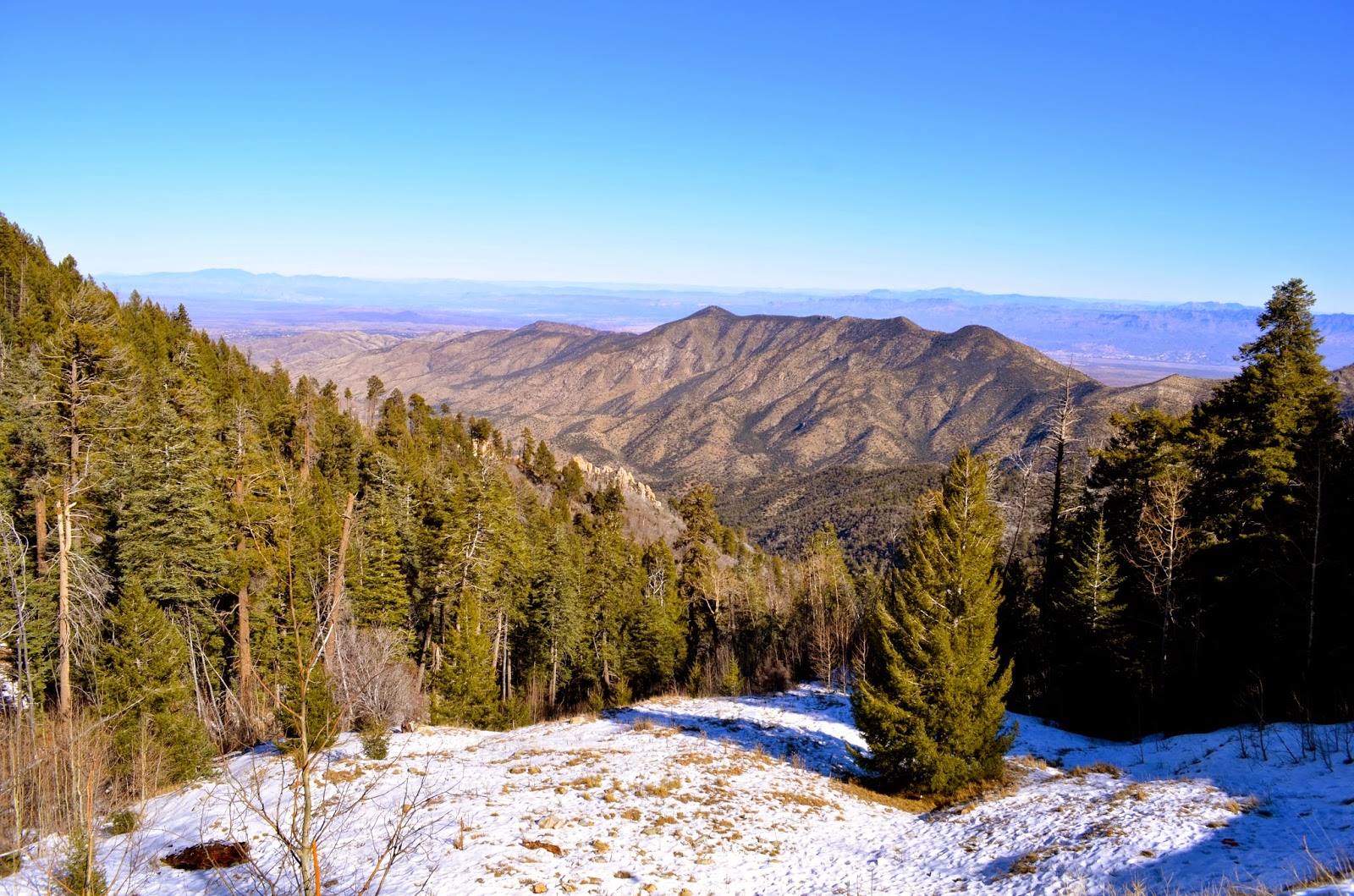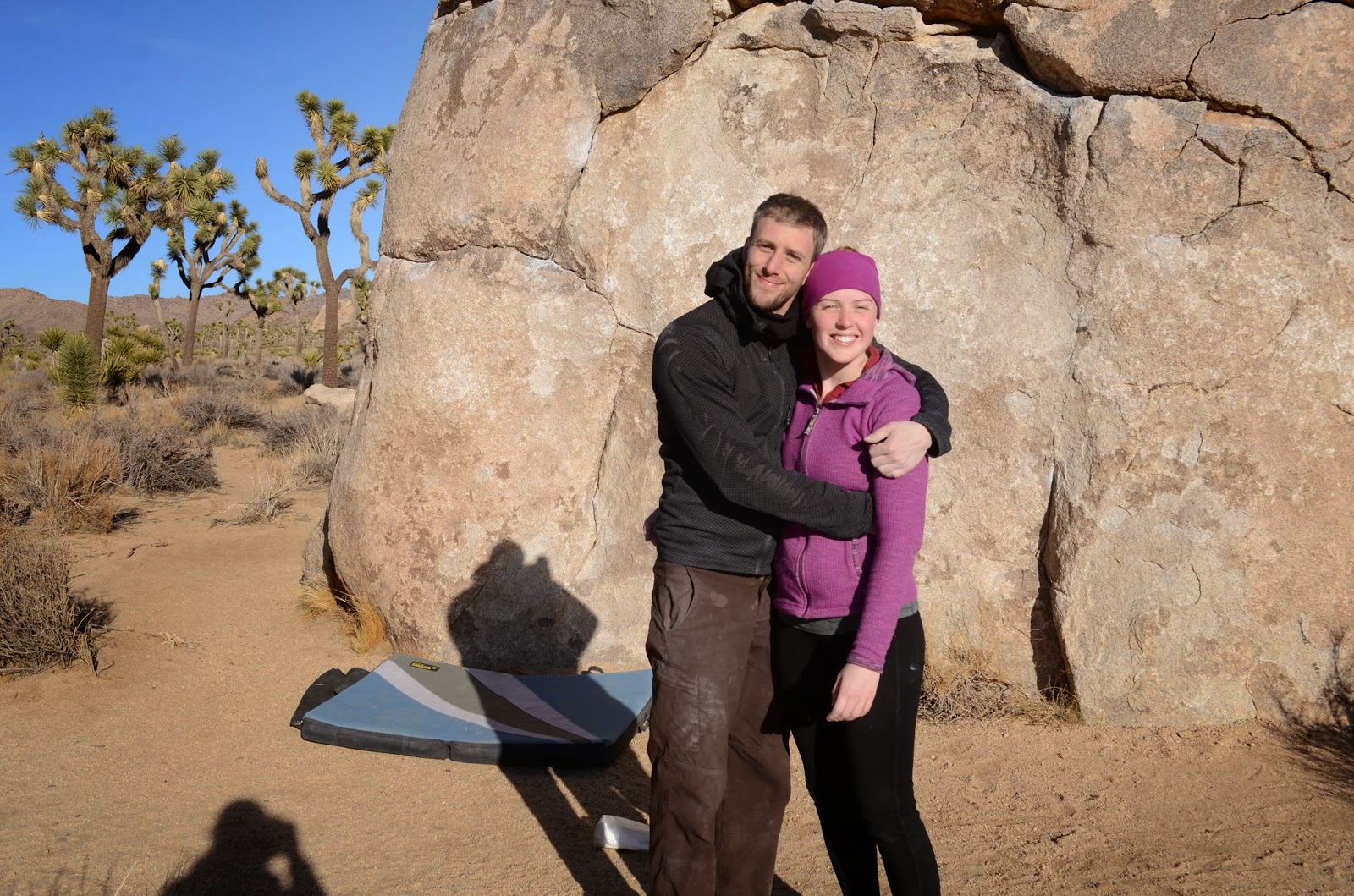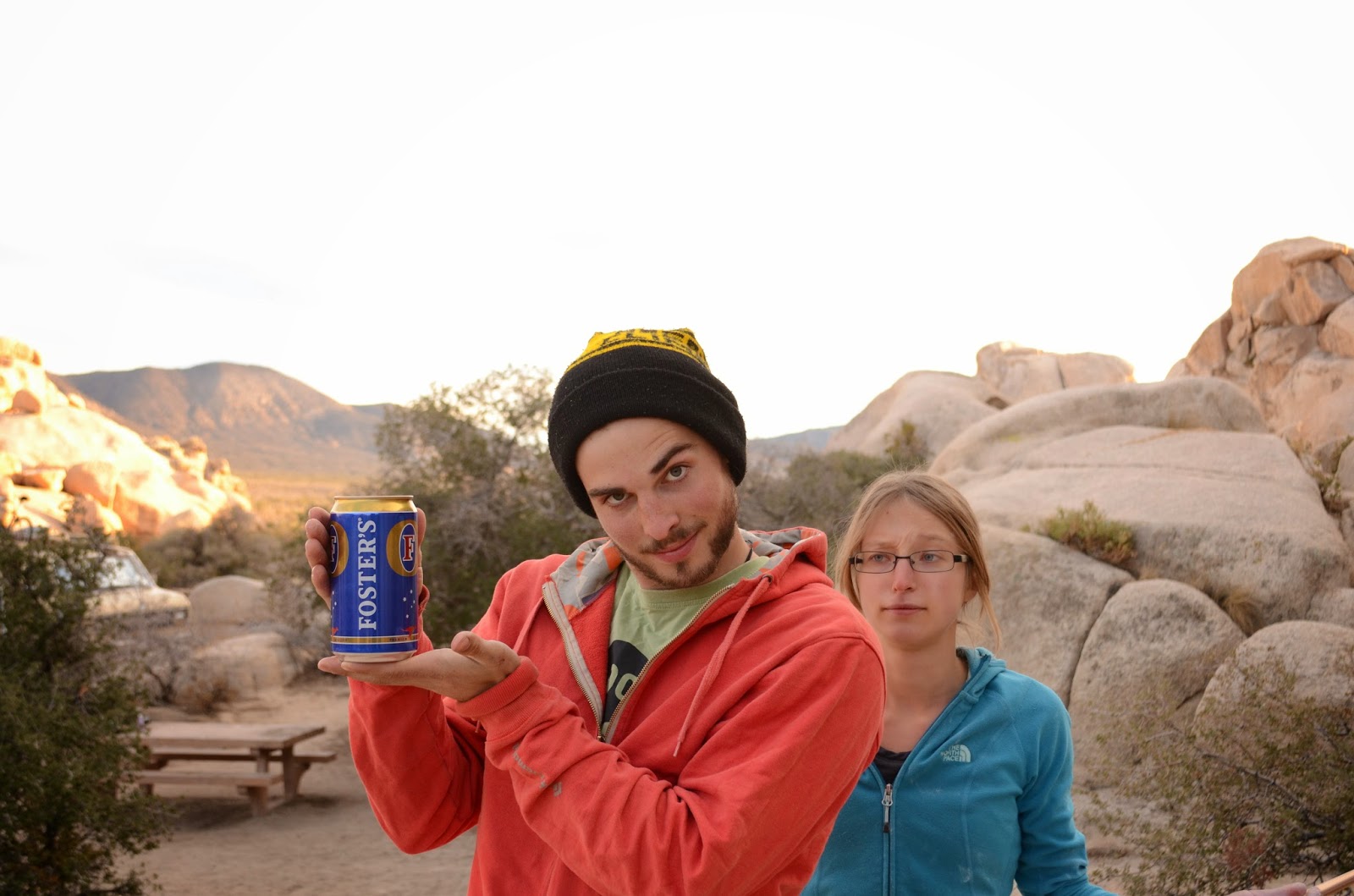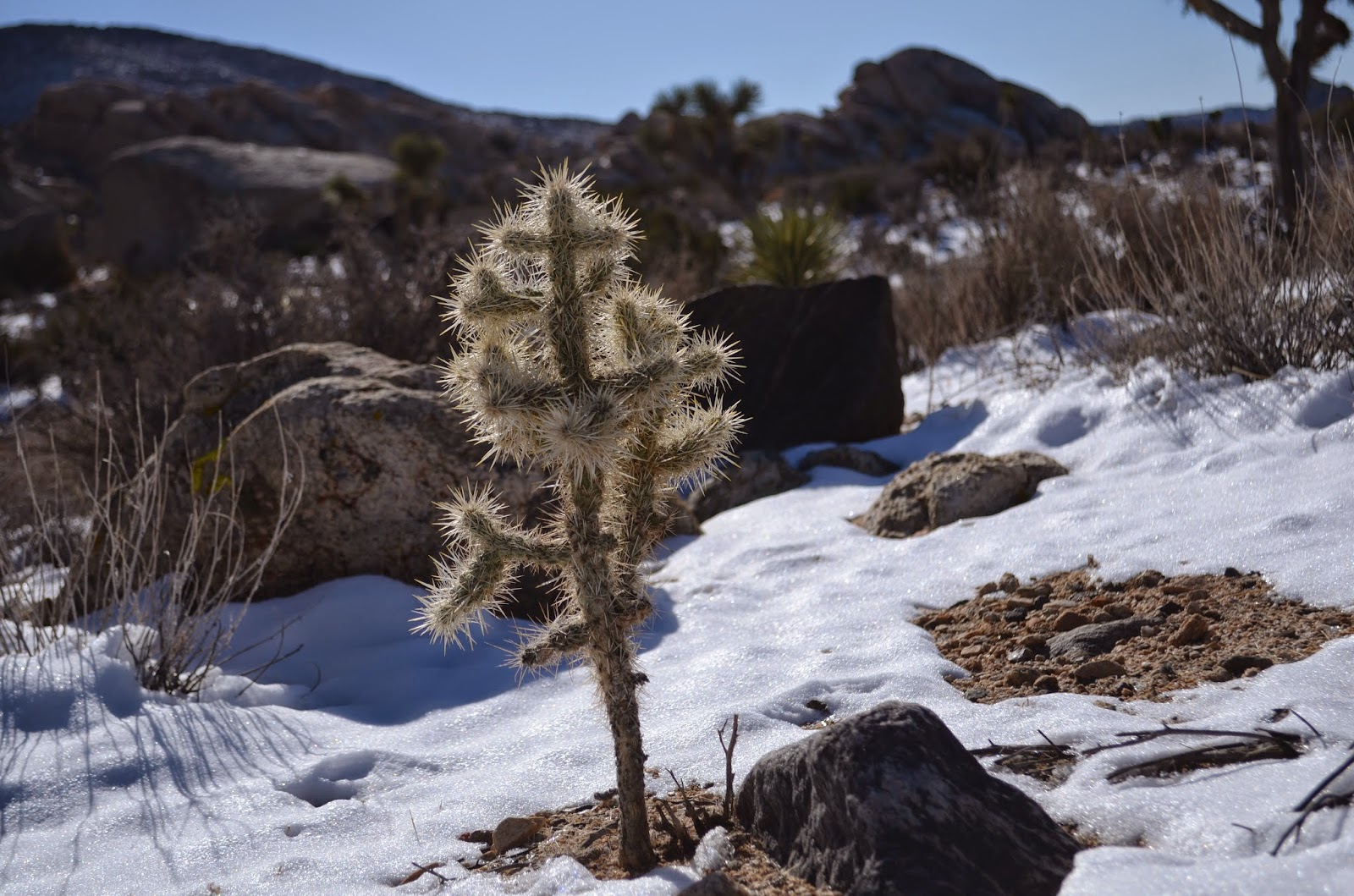Rising over the horizon east of Tucson,
Arizona are the Santa Catalina Mountains, of which Mount Lemmon is the tallest. We had heard about climbing at Mount
Lemmon (we later discovered that all the climbing in the Catalinas is
collectively referred to as “Mount Lemmon”), and wanted to check it out. As our time in southern AZ was limited we decided that the best way to approach Mount
Lemmon this time around was to do so as a scouting mission. We wanted to see and
explore and learn as MUCH as possible about the area over a two day period, in
order to decide if it would be worth it for us to go back. So here is our
short-term evaluation of the climbing and the area – it has helped us
and hopefully it will shed some light for a few others as well!
Overview
The Catalina Highway winds its way up to
the top of Mount Lemmon over the course of 45-60 minutes, with plenty of
climbing from mile 0 to the summit. The scenery is beyond stunning, with ecosystems
shifting from the proud Saguaro Cacti of the Sonoran desert, through thick
conifer forests, and into alpine areas. Beautiful orange and yellow rock is
found in canyon after canyon, and many of the walls are decorated with green
and black lichens. In our opinion, Mount Lemmon was worth the visit simply for
the view.
 |
| View over the canyon from Windy Ridge |
Mount Lemmon is part of a National Forest,
meaning you pay a fee to be there, but fortunately it is almost negligible. Five
dollars a day or twenty dollars for a year pass, and during the off-season
there are segments of the highway that don’t require any fee at all. There is also
camping on the mountain (no amenities except pit toilets) and while some sites
cost a small fee, other sites are free! In the winter, at least Molino Basin Campground and Gordon Hirabayashi (Prison Camp)
are open.
At the base of the mountain there are
plenty of grocery stores to choose from. Directly on Catalina Highway is a
Safeway, and next door you can find a small coffee shop called Le Buzz - a well-known climber hotspot
with great food and coffee. Still on the east side of town but about 15-20
minutes from the bottom of the highway are a Trader Joes and a Sprouts, which
offer some healthier/organic grocery options. Alternatively, if you’re already on
the mountain and don’t wish to drive down, there is a small town called
Summerhaven at the very top, where you can find a great restaurant called the Cookie Cabin that serves up delicious
pizza and cookies. Unfortunately
we can’t speak to where a good place to fill water might be, but we've contacted the visitor centre with hopes of hearing back.
From what we can tell, Mount Lemmon is
suitable as a year round climbing destination, however dry spells of Spring and
Fall may be best. In the summer, average temperatures in the high 20s (degrees
Celsius) could restrict climbing to shady and/or high elevation crags. In our
case, we were unable to reach the highly praised climbing at The Fortress due to snow, and on the
lower mountain streams were high enough such that the landing zones around
boulders were under water. Mid-mountain however, the January temperatures
between 10 and 20 degrees Celsius made for great conditions. We would have still been
more than busy over a couple weeks if we had the time.
 |
| View from the top of Mount Lemmon |
 |
| Road to The Fortress closed due to snow |
Route Climbing
Day one at Mount Lemmon was overcast and
somewhat stormy with a few sprinklings of light rain. We spent this day
visiting two of the crags at Windy Point
West. The first crag was called North
Fin, and boasts classics ranging in difficultly from 5.7 (trad) to 5.13c
(sport). The crag is easily accessed, located in a beautiful corridor beyond
which the canyon is visible. We climbed a couple mid tens here which were quite
fun, and eyed up some other routes. When we return Graham is hoping to get on Tree Monsters (5.12d 3 stars) and Genevieve (5.13c 3 stars).
 |
| Kim raps off in the corridor at North Fin crag |
 |
| Graham climbs Right Tissue (5.12c) at Beaver Wall |
The weather on our second day was
spectacular, with clear blue skies, much lower humidity, and temperatures
approaching 20 degrees. We climbed this afternoon at The
Helmet crag in the Windy Ridge area. The Helmet includes a vertical wall and a small cave with four unique lines and a couple of fun extensions. Graham snagged the
onsight of The Crossing (5.12b 3 stars) and Dwarf Toss (5.12c 3 stars). We
would have given the rock a great rating if it weren’t for the glue-reinforced
holds – but regardless of this the movement on steep terrain was very fun.
 |
| Looking out from the cave at The Helmet |
 |
| Graham onsights The Crossing (5.12b) in The Helmet cave |
There are several other classic routes that Graham is excited to get on when we return, including Heel-A Monster (5.13- 4 stars) at the Orifice, Poplar Mechanics (5.12+ 3 stars) at Beaver Wall and Free Loader (5.13- 4 stars) at the
Helmet, to name a few.
Bouldering
The bouldering is fairly limited and leaves
something to be desired. To be fair though, our judgment is limited to what we
observed, as we didn’t actually DO any bouldering while there. There are two
main areas to boulder...
At the lower highway, a few difficult
problems at Hairpin Boulders are
scattered in the wash.
 |
| Glue-reinforced holds on Block Obama (V10) |
A little higher up the highway, the Molino Basin Boulders rise out of a
creek bed. The setting is very beautiful and in the wintertime, we discovered
the boulders literally sit in the water of the stream, making winter bouldering
a no go. The rock is super smooth and river polished – akin to the glacier
polish segments of “Incredible Journey” at Forgotten Wall in Squamish – with beautiful
crystals and patterning throughout.
 |
| Checking out some problems on the Boxcar Boulder in Molino Basin |
 | |
| Smooth, smooth river polished holds |
***
Because we didn't stay up at Mount Lemmon,
we did not have a chance to experience the climbing culture in the area. We
didn't see a single other person climbing either, although this is likely
because we were there mid-week in the middle of January, it had recently
rained, and the number of crags in the area is expansive. There are two indoor gyms in Tucson, which we’ve
heard are very popular and a great way to meet local climbers. We’re planning
to spend 2-3 weeks at Mount Lemmon next winter and are stoked to get to know
the community.
The area guidebook, “Squeezing
The Lemmon II” came out in 2000, and is available at gear stores in town.
Due to our brief stay we did not purchase the guidebook, but rather found the
info we needed on the Mountain Project App. We were quite impressed with the
app, however some routes (trad lines especially) were difficult to find. We
plan to invest in the book when we return next year!



























.JPG)







